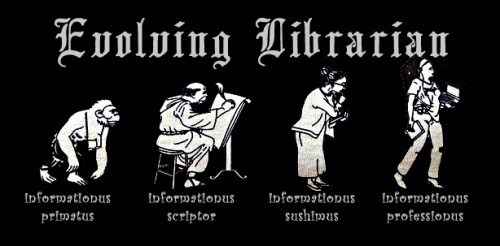Category: Libraries
Happy National Library Workers Day..Go break some rules!
(Originally Posted Tuesday, April 15th, 2014)
Last week I attended a poetry reading by former Poet Laureate Robert Pinsky at Playhouse Square. He appeared as part of the Writer’s Center Stage series that is a fundraiser for the Cuyahoga County Public Library Foundation. Anyway, while his poems were, not surprisingly, impressive, as was his remarkable intellect and cultural knowledge, the moment that stood out to me most was during the Q&A portion of the evening. A young MFA student approached and asked for advice about allowing sentimentality in poems, which is, apparently, out of vogue. (Not that any angst ridden teens would know)
Nodding sagely at the confines placed around talent, Robert Pinsky uttered this gem:
He went on of course and further answered the young man’s question in context of poetry, but for me this was it, the whole point of the evening.
Earlier in the day I had answered questions about my management style. These types of questions always lead me to wonder how accurately any of us describe our own leadership styles. Do we describe who we are as leaders, or who we want to be? I want to be the type of leader who provides the vision and coaching needed to achieve organizational goals and help team members grow professionally. But, I know I have a tendency to want things done the “correct way.” I have to focus to make sure I remain a coach who facilitates another’s learning and growth, rather than slipping into a pacesetter and authoritarian.
While we were on vacation my friend Reagan found me the best cozy (or koozie for my friends and family in the South). It read:
I’m not in charge. I just know what you should be doing.
Darn tootin’!
The thing is, everything I believe in about the best way people learn, and what I know to be the best way I learn, is for the learner to be at the center, actively participating…doing the learning. I have to make sure not to take that away from staff either. If I prescribe every step or override too much, I’m not only taking away my colleagues’ chances to learn from potential failures, I’m removing the opportunity to discover new strategies and solutions from others. Just like in the classroom, I need to be the guide on the side instead of the sage on the stage.
A little over a year ago a group of us from my division went to a workshop at Case Western Reserve called Leadership as a Conversation. At one point the facilitator asked us to think of the person who has been the greatest leader in our lives. Then he said, I can guarantee you that this person made you feel smarter and more capable. Yep.
I’ve been fortunate in my career to have a number of great supervisors who focused less on their bossiness and more on empowering their team members and growing their strengths, even if that meant growing them up and out of their own departments. Coaching managers use crucial conversations to lead, whether those conversations are with colleagues that they supervise, colleagues who supervise them, or stakeholders outside their reporting structure. These leaders nurture talent by listening and asking right questions. For instance, instead of responding to a colleague’s proposal with, “I don’t see how that can work with our budget,” the question, “How do you see that working with our budget?” gives room for creative problem solving and prioritizing by the employee.
Over the last few years I’ve been to dozens of library conferences and heard headliners such as Sir Ken Robinson, John Seely Brown, Artie Isaac, and Mimi Ito all talk about the need to celebrate and nurture creativity, problem-solving, critical thinking, and communication, the skills that will help us innovate and thrive as a species, let alone as workers. The library profession has bought into this whole hog. We all nod and smile and create our innovative-just-like-everyone-else makerspaces for our teens to build those 21st Century skills in Connected Learning environments, and that’s great. But, somewhere along the way we failed to recognize the flaw in our approach.
How are we to grow creativity in others if we remain rigid ourselves?
Most library systems are operating with the same basic staffing structure (although, most likely with fewer staff) as they were 10 years ago, heck, 20 years ago, or more! If my grandmother came into a contemporary library today, she might not even recognize it as a library, but I bet she would completely comprehend the job descriptions for the library staff.
If we truly want to innovate and remain (or become) a relevant resource in our customers lives, we need to be as ruthlessly creative about everything we take for granted in libraries, particularly with the roles of staff. We need to take a page out of the start-up book and hire for attitude and aptitude, rather than a satisfactorily completed checklist of experiences and easily acquired knowledge. It doesn’t really matter if a new hire knows this particular piece of software today because it’s going to change tomorrow and every day for the rest of our lives. By the same token, libraries everywhere are guilty of hiring for management “experience” rather than aptitude. You may have completely demoralized your former team and driven off some of the best talent, but if you officially signed off on time cards, congratulations, you’re hired. A former supervisor once asked me to be a reference for her because she felt it was as much, if not more, important for a future employer to hear from one of her subordinates as it was to hear from her superior. I couldn’t agree more.
Unfortunately, good leaders may receive little praise. If we truly engage our team members and facilitate their best efforts they may come to see us as just staying out of the way, and that’s okay. “First, do no harm,” is a minimum standard to which organization members at all levels should aspire. But, if we wish to aim higher, we need to encourage creativity by fostering an atmosphere of experimentation; that means loosening hierarchies, moving from just having an open door to inviting folks in. We need to commend those who notice areas in which we could improve and suggest ways to do so, and we need to particularly praise those who follow good ideas through to completion, even if we didn’t quite believe it would work out. Not only do staff members need room for failure, they also need room for success. We have to be strong and confident enough as leaders to embrace challenges to our assumptions and encourage our colleagues at all levels to think critically and creatively. After all, we can’t do anything great unless we do.
Know Your Role… and brag about it!
Speaking of mimicking… You know who wants to be like librarians? Kids. It’s true. I can’t tell you how many times parents have told me that their little ones played “Miss Sarah” at home. They line up stuffed animals, dolls, younger siblings, good-natured parents and grandparents, and “read” books to them, sing songs, dance, and basically mimic everything we do in storytime.
You know who else wants to be like librarians? Parents. When their three year old threatens to melt down in utmost embarrassing fashion, who soothes them about how toddler brain development pushes kids to seek independence and test boundaries? When it seriously seems impossible that there are any books left on dinosaurs that they haven’t read 3,000 times, who finds the exact one that will please parent and child? Lastly, which publicly funded employees do community members trust more than any other? If you answered Librarians to any of the above. Ding, ding, ding! Give yourself 3,000 points!
So, from where does this worry about irritating parents with our knowledge emanate? The librarians in our group with this worry reflected on their own experiences as parents. They thought that they would be annoyed attending a storytime at which the librarian periodically pointed out winning strategies. Yet, it’s unlikely that parents would be offended if a swimming teacher told them strategies to help their children overcome fear of the water, or avoid drowning.
One issue is that librarians sometimes are afraid of grabbing that crown of Early Literacy Expert, and wearing it with the pride that they deserve. One lady in our group asserted with full sincerity that parents most certainly do not seek her counsel or view her as a literacy expert.
example conversation with shy librarian:
But certainly a parent has asked you for recommendations for her reluctant or struggling reader?
Well, yes.
Has a parent ever confided in you about his concerns about his child’s development, behavior or reading interests?
Well…yes.
Did you suggest some resources?
Of course.
Did the parent take them?
um, yes, actually.
Viola! Congratulations! You ARE a community literacy expert. Here’s the deal though. To keep this amazingly important job, you have to tell people about it. You have to brag. The work we do in storytime and generally around early literacy makes a huge difference. Children who begin Kindergarten with the skills we help them develop are more likely to graduate from high school, stay out of prison, get higher paying jobs, etc… People like those stories. In fact, people like those stories enough to continue to pay for libraries and, you know, librarians. But, they have to hear them.
Librarians, it’s time to get unquiet. If you’re afraid that parents won’t like you telling them what to do, try this: Ask them to vote. “Who here would like to know how your child can be ready to read by Kindergarten.” Chances are the parents are aligned with you in that goal. Work on it together, and embrace your role. Librarians are the number one advocates and experts on early literacy. The best thing you can do to help the kids is to toot your own horn.
As we say in Baby & Me, “Sing out loud. Sing out strong. Your babies love your voice!”





